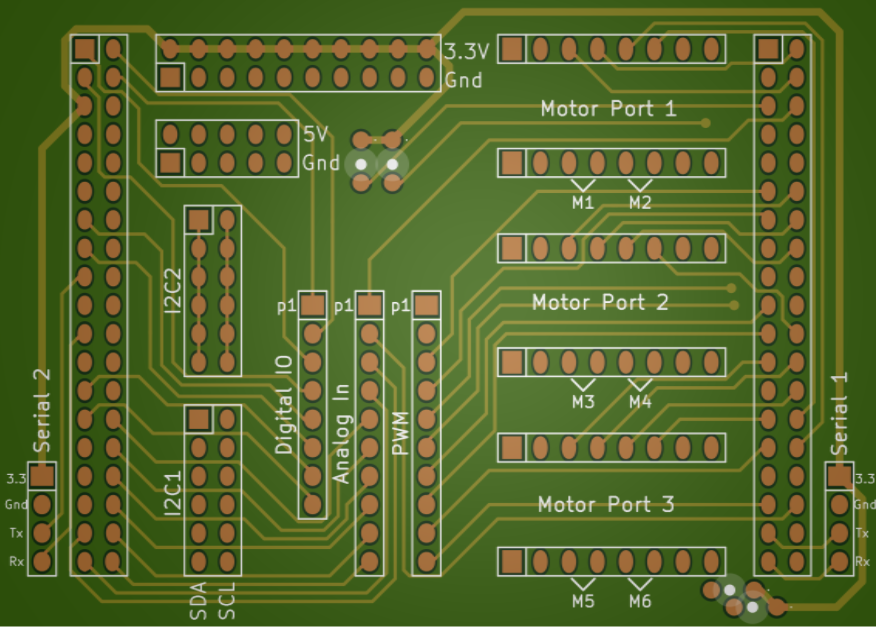Now that I had some great visual programming software, I wanted to work on the hardware. I wanted a system that even elementary school children could use. The STM32F411 Nucleo board was great, but not exactly designed for children. So I thought of designing a simple extension board for the Nucleo board that moved all the pins around to allow the students to have all the digital i/o, analog inputs, PWMs, and even motor ports easily coded and accessible. Then all of these pins can be specified in the software so that students can find the pins they are looking for easily (they are color coded)!
So I pulled out KiCad (I wanted it to be open source!), and starting on a board. This is what I came up with:

I ordered the boards from DirtyPCBs, and everything worked! It really was just a simple pin mapping board, what could have gone wrong!? The three motor ports were designed to plug in DRV8833 Dual Motor driver boards from Pololu and to plug in a HC05 Bluetooth serial module into one of the serial ports. But the ease and price of creating a board (it had been some years since I created a board, back when it used to be more expensive!), made me start thinking...
Discussions
Become a Hackaday.io Member
Create an account to leave a comment. Already have an account? Log In.